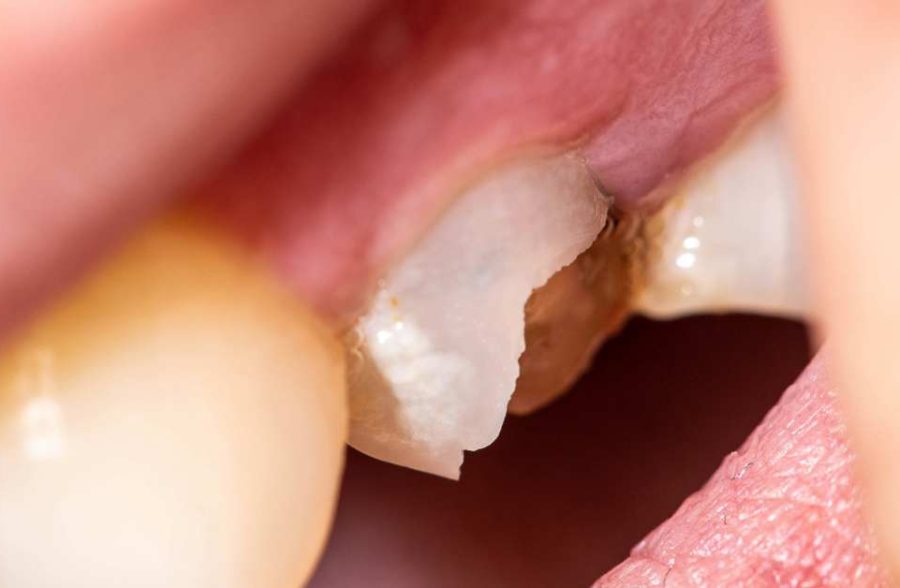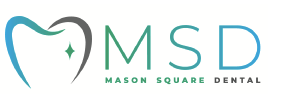Cracked teeth are a common dental problem that can cause significant discomfort and, if left untreated, may lead to more serious issues. Even the healthiest teeth aren’t immune to cracks, which can happen due to unexpected trauma, harmful oral habits, or simply daily wear and tear.
Signs and Symptoms of Cracked Teeth
Pain and Discomfort
– Intermittent toothache: You may experience pain that comes and goes unexpectedly. This happens because the crack exposes sensitive nerves, causing discomfort when irritated by food particles, liquids, or bacteria.
– Pain when chewing: You might not notice anything until you bite down on something, especially hard or sticky foods. The pressure from chewing forces the crack to open slightly, irritating the tooth’s inner layers.
– Rebound pain: Sharp, fleeting pain that occurs when you release biting pressure, particularly when eating fibrous foods.
– Unexplained dental pain: Sometimes the pain feels vague or seems to radiate across one side of your mouth, making it difficult to pinpoint the exact problem tooth.
Sensitivity
– Temperature sensitivity: Hot coffee, cold water, or ice cream might cause sharp discomfort when consumed. This occurs because the crack exposes the dentin or nerve that healthy enamel would usually protect.
– Sensitivity to sweetness: Some patients experience pain when consuming sugary foods or drinks.
Gum Issues
– Swollen gums: You might notice swelling in the gums around a particular tooth. This could indicate bacteria entering through the crack, potentially leading to infection.
Types of Cracked Teeth
Not all cracks are the same. Here are the common types you might encounter:
1. Craze lines: These are tiny cracks that only affect the outer enamel. They’re extremely common in adult teeth, cause no pain, and typically don’t require treatment.
2. Fractured cusp: This occurs when a piece of the tooth’s chewing surface breaks off, often around a filling. It rarely damages the pulp and usually doesn’t cause much pain.
3. Cracked tooth: A crack extends from the chewing surface vertically toward the root. The tooth isn’t yet separated into pieces, though the crack may gradually spread.
4. Split tooth: Often the result of an untreated cracked tooth, a split tooth has distinct segments that can be separated. This type cannot be saved intact.
5. Vertical root fracture: These cracks begin in the root and extend toward the chewing surface. They often show minimal signs initially and may go unnoticed until the surrounding bone and gum become infected.
How We Diagnose Cracked Teeth
Diagnosing a cracked tooth can be challenging since cracks aren’t always visible to the naked eye. We use several methods to identify them:
– Clinical examination: I’ll carefully examine your teeth, possibly with magnification, to look for visible signs of cracks.
– Bite test: I may ask you to bite down on something to help identify which tooth is affected and the location of the crack.
– Dental explorer: A special instrument can help detect edges of cracks.
– Dental dye: Sometimes we use a special dye that makes cracks more visible.
– Transillumination: Shining a fiber optic light on your tooth can help reveal cracks as they interrupt light transmission.
– X-rays: While not always effective for detecting cracks, X-rays can reveal problems in the pulp that might indicate a crack.

Treatment Options for Cracked Teeth
Treatment depends on the type, location, and extent of the crack:
For Minor Cracks
– Bonding: For small cracks, I might use a tooth-colored composite resin to fill in the crack, restoring appearance and function.
– Filling: Similar to treating a cavity, a filling can repair minor damage.
For More Significant Cracks
– Dental crown: A crown covers the entire damaged tooth, protecting it from further harm. Crowns can be made from various materials including porcelain, ceramic, or metal alloys.
For Cracks Affecting the Pulp
– Root canal therapy: If the crack has reached the pulp (inner part of your tooth containing nerves and blood vessels), a root canal procedure removes the damaged pulp, cleans the area, and seals it before covering with a crown.
For Severe Cases
– Extraction: Unfortunately, if the crack extends below the gum line, the tooth may not be salvageable and might need to be removed.
Preventing Cracked Teeth
Here are some strategies to help prevent cracked teeth:
– Avoid hard foods: Be cautious with ice, hard candy, popcorn kernels, and other hard items that could damage your teeth.
– Use a mouthguard: If you play sports or grind your teeth at night, wearing a protective mouthguard can significantly reduce your risk of dental injury.
– Maintain good oral hygiene: Regular brushing, flossing, and dental check-ups help keep your teeth strong and healthy.
– Address teeth grinding: If you clench or grind your teeth, especially during sleep, talk to me about solutions to prevent damage.
When to Seek Immediate Care
If you suspect you have a cracked tooth, please contact our Moonee Ponds Dental Clinic promptly on (03) 61393709118 In the meantime:
– Rinse your mouth with warm water to keep it clean
– Apply a cold compress against your cheek to reduce swelling
– Take over-the-counter pain medications if needed
– Avoid chewing on that side of your mouth until you can be seen
Early diagnosis and treatment are essential for saving cracked teeth and preventing further complications. The sooner you seek treatment, the better the chance of preserving your natural tooth.

